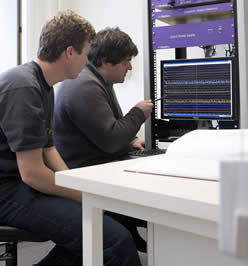 Christopher A Reid
Christopher A Reid
Recipient of the 2007 Molly McDonnell Foundation Scholarship
Ion Channels and Disease Group, Howard Florey Institute, University of Melbourne
Over 30% of patients with epilepsy fail to achieve adequate control of their seizures by pharmacological intervention. A key goal in our understanding of this disease is to define the molecular participants involved in the epileptogenic process and attribute functional consequences to them.
One candidate class of molecules are the hyperpolarisation activated cation channels (HCNs). The HCN current is a non-selective cationic conductance that is activated by membrane hyperpolarisation. HCN current (Ih) is widely distributed in the central nervous system where it contributes to resting membrane potential, shapes responses to synaptic input and influences rhythmic neuronal activity. HCNs are encoded by four known genes (HCN1, HCN2, HCN3 and HCN4).
A number of studies have mechanistically linked changes in the function and expression of HCNs to focal and generalised epilepsy. The hypothesis we set out to test was to attribute a functional consequence to a given change in HCN function. Work completed while supported by the Molly McDonnell Foundation has gone some way to answering this question. Specifically, we have shown that a down regulation of HCN function is directly linked to increased brain excitability. We can reverse this excitability with an antiepileptic drug, lamotrogine, that increases HCN function. These results tell us that HCN function is an important contributor to brain excitability and makes this channel a very attractive drug target. These findings have been or will be submitted for publication. In each submission the Molly McDonnell Foundation was acknowledged.
Christopher A Reid
Back to list of Past Recipients
